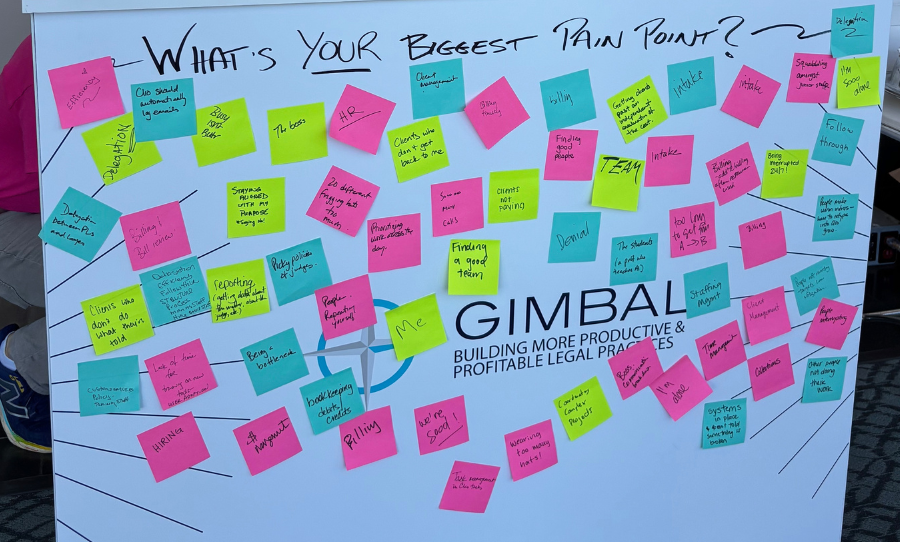E217: Three Easy Ways to Use Measure from DMAIC for Process Improvement
Jan 24, 2024
Welcome back to our series on the Practice Accelerator Framework based on DMAIC (Define, Measure, Analyze, Improve, Control), a structured approach to process improvement.
We started the series with a general introduction and then dove into the Define phase. In Define, you set the boundaries of your project and identify what your client wants or needs. Then you move into the Measure phase, where you determine how you currently work to get (or try to get) that client-centered result.
Your Tip: The goal of Measure is to determine the current state of your process. You are looking for your actual performance baseline. Not how you think you do the work or how you think you should do the work, but how it actually gets done right now.
Why Measure?
People tend to skip over this part, but you can’t improve what you don't know, and you can't demonstrate improvement unless you can show where you started. Demonstrating success builds necessary buy-in.
First, the nay-sayers will need convincing. They will need to see how much time you’ve saved, how much overhead you’ve cut, how many fewer times you have to turn that draft agreement to get it right, or how much less frustrating the process becomes once it’s been improved.
Second, change is hard work. You’ll need to show (and celebrate) all your wins to keep your organization and your improvement teams enthusiastic and engaged. You can’t do that unless you can point to concrete changes for the better.
For one of our clients, the improvement team convinced the partners of the value of their improvement plan by demonstrating that one change alone would save about 25,000 sheets of paper (and the associated printing, shredding, and recycling costs) every month. The team knew the numbers and the cost. They measured.
So how do you work now to get the result for your client?
Map it out
Bonus Tip: Mapping is, hands-down, the most powerful tool for visualizing your process.
Whether you are taking a high-level view through value stream mapping, or getting down to the nitty-gritty in a process map, you will learn more about the current state of your process by mapping it than by any other way.
Mapping is foundational for improving your efficiency and profitability. It shows you where you’re losing time and money. It’s something we do regularly with lawyers in our coaching programs, and it always results in more streamlined and effective workflows.
Use the Eight Wastes
Whether you map a process or not, you can use the Eight Wastes in the Measure phase to identify problem areas. Sit down with your team and talk honestly about frustrations, problems, and bottlenecks in your process. Create a list, or mark them directly on your map. Every pink sticky on this process map shows a place where the team found a waste.

Go on a Waste Walk
Go to the place where the work is done. Even if it’s virtual work, look at the area where people are working. Speak to the people doing the work. Observe them. See what they do, how they do it, where they have to go to get information, documents, etc. If it’s appropriate, perhaps even time them. Your improvement team can't include everyone, so this is one very important chance to canvas the wider audience of people engaged in the process you're examining.
Remember, we are all very good at adapting to broken processes. Identifying and understanding those broken processes is critical in the Measure phase.
Create and Track Metrics
Once you’ve visualized your current state and started identifying the issues, you'll likely find you need more information. It’s time to create a data collection plan and determine your current performance baseline.
The information you collect will depend on the objectives you set in the Define phase of DMAIC. What does your client want? What is it you’re trying to improve?
Metrics don’t have to be complicated. Sometimes a simple tick chart on your desk is all you need to keep track of the number of turns of a document, the number of times you receive a form that’s incorrectly filled out, or the number of interruptions you deal with every day. The key is to choose metrics that support your improvement goals.
For example, if you want to improve the quality you deliver, look for ways to measure defects, rework loops, or client satisfaction. If your client wants faster turnaround, measure the overall time a process takes (for example, the time to draft, review, finalize, and send out an invoice) and consider timing some of the key individual steps so you can discover where the bottlenecks are. Look also at a rework metric like the number of turns of a document. Consider metrics that overlap. For example, rework indicates defects, but it also affects quality and time.
The data you collect can be overlaid on your process map to build a rich understanding of how you work now to deliver what your client needs. Once you understand your current state process, warts and all, you’re ready to move on to the next phase of DMAIC: Analyze.
For more information on metrics or anything else about using DMAIC to improve your practice, please book a call with us directly and follow us on LinkedIn.
Success in your inbox!
Sign up for our Productivity Tips. You'll get a one tip and one featured article each month, both packed with practical, actionable advice that will help you build a more profitable, productive practice.
We will provide you with practice management tips and related information and offers. We will never sell your information, for any reason. Unsubscribe at any time.


